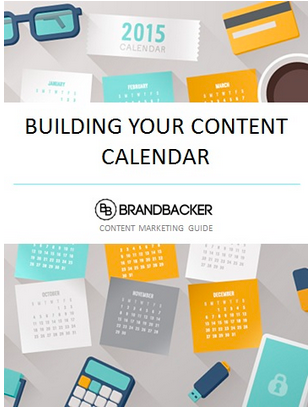At BrandBacker we guide hundreds of companies through the Influencer Content Marketing process using our innovative platform and first hand insights into what makes a successful Influencer/Brand Relationship. To share this knowledge with forward thinking companies like yours, we’ve created the BrandBacker Content Marketing Guide Series. In our ongoing series we’ll be putting each of our readers through BrandBacker 101.
Once you’ve sorted out the focus of your marketing initiatives, the next step is to determine the actual deliverable content that is to be produced. Depending on the focus, the content produced might have to be published on a different medium. For example, if your focus was SEO, the type of content you can create has to be indexable by search engines meaning that social network posts won’t be as helpful.
Having your content marketing strategy utilize a number of different content types allows you to reach your target audience in fresh ways. Here are some of the more popular content mediums and the focuses they align with.
Blog Posts & Articles
Articles and Blog Posts are great ways to help build your SEO and get influencers engaged with your brand and product. Bloggers and publishers create a piece of original content which is published to their readers, shared across their social media accounts, and leveraged by brand to engage customers.
YouTube Videos
Content that focuses on creating YouTube videos that provide a media rich experience for consumers. YouTube videos work similar to blog posts and articles yet the content is ‘in motion’ and can produce a much more interactive experience. Videos can help provide a consumer more ‘proof’ that a product is a good fit or show how it works.
Social Media Posts
Content focused on driving social activity and actions that can potentially reach millions of people. Social Media posts work similar to content creation campaigns but the focus is on promoting across social networks using shorter, quick posts to their followers.
Editorial Images & Infographics
Content that focuses on visual assets to deliver a brand message. This includes editorial photos, product photos, charts & infographics. This visual content serves as a testimonial of how effective your product is based on results that readers can see or data backed by a reputable source.
Surveys & Roundtables
Content that focuses on getting feedback about a brand or product. Survey questions normally tackle user experience, product reviews and general habits. Questions can be arranged in a variety of creative formats. This type of information can be used to add data to marketing campaigns, branding materials and your sales distribution pitches.
Contests & Giveaways
Content initiatives that reward fans by giving them a chance to win a prize in exchange for performing a repeatable action. For example, a brand can create a contest where readers have to like a Facebook page in exchange for a change to win a prize package.
Content Portals & Landing Pages
Content Portals and Landing Pages can act like a dashboard for all of your content. This type of initiative focuses on creating content around keywords you’d like to own in SEO. For example, if you have travel related product you might consider creating a custom content portal or landing page that highlights exotic locations or travel activities.
Guides & White Papers
Guides and White Papers are documents that provide insider information on a topic from experts. For example, a food company may publish recipe books or a brand might publish the results of a consumer survey. This type of content focuses on assisting consumers in finding out more about a topic that directly relates to your brand and product.
You can read more about How To Organize Your Content Calendar In Our Complete Guide Below!



